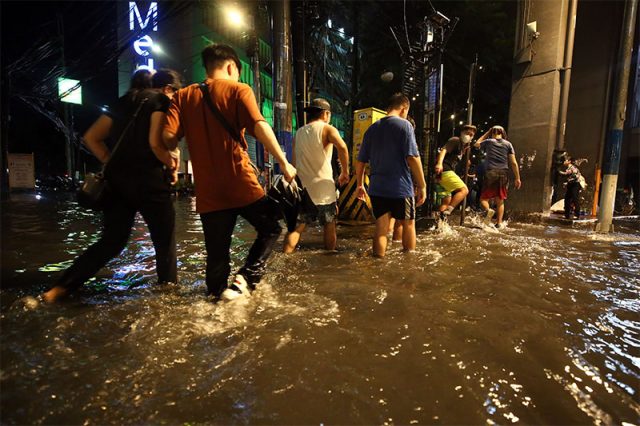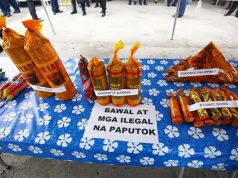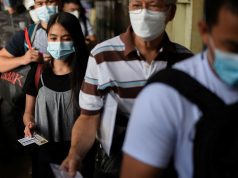
The Department of Health (DOH) has warned the public about leptospirosis, a common disease during the rainy season.
Leptospirosis is normally caused by infected rats and contaminated water. Residents who live in flood-prone areas are thus prone to contracting it.
This disease, however, can also come from other sources.
In a social media post on September 1, the DOH explained that leptospirosis is an illness caused by a bacteria called Leptospira.
Leptospira can be found in the urine of infected animals and contaminated soil and water.
DOH also explained how it is transmitted via an infographic that accompanied the post.
It was shown here that the bacteria originate from contaminated soil or water. Then, any animal that comes in direct contact with it can get infected.
DOH cited that leptospirosis is commonly found in small rats, cows, pigs and dogs.
Humans can easily contract it through the following:
- Pagtalsik ng kontaminadong tubig/ihi sa mata, ilong, at bibig
- Pagkain at pag-inom ng maduming pagkain at tubig
- Paglusong sa maruming tubig habang may bukas na sugat
Taliwas sa kaalaman ng nakararami, hindi lamang sa ihi ng daga nagmumula ang bakterya na nagdudulot ng Leptospirosis.
Kung kaya’t ang pagpapanatili ng malinis na kapaligiran ay ang pangunahing sandata upang maiwasan ang sakit na dulot ng bakteryang ito. pic.twitter.com/ojfXgvjfrw
— Department of Health Philippines (@DOHgovph) September 1, 2023
According to the Centers for Disease Control and Prevention (US CDC), people who have leptospirosis can suffer from severe health conditions if they do not treat it.
These include kidney damage, meningitis, respiratory distress, liver failure, and even death.
It is also common in countries with warmer climates such as the Philippines.
Leptospirosis can spread at any time. Outbreaks, however, can happen in places that experience heavy rains.
“Cases of leptospirosis can increase after hurricanes or floods when people may be exposed to contaminated water or use it for drinking or bathing,” the US CDC said on the website.
Symptoms of acquiring the Leptospira bacteria include:
- High fever
- Headache and muscle aches
- Red eyes
- Chills
- Vomiting
- Diarrhea
- Jaundice
Leptospirosis and rain
A previous study titled “Influence of Rainfall on Leptospira Infection and Disease in a Tropical Urban Setting, Brazil” also found data that suggested the influence of rainfall on an increase in the incidence of patients with leptospirosis in Brazil.
The researchers concluded that the risk of being hospitalized due to leptospirosis was higher in periods with heavy rainfall.
Non-hospitalized infections, however, can occur year-round.
“During the study period, the risk of acquiring leptospirosis that required hospitalization was significantly higher in periods with elevated rainfall. However, this finding is in contrast to Leptospira infection in non-hospitalized persons,” the researchers said.
“Our findings indicate that Leptospira infections occur year-round in this urban tropical setting and the cumulative incidence of Leptospira infection is high (2%–9% per period),” they added.
In the Philippines, cases of leptospirosis and dengue (yellow fever) have risen during the start of the rainy season last June.
RELATED: DOH sees rise in leptospirosis, dengue cases
Following the onslaught of recent typhoons, DOH logged 542 cases of leptospirosis in the past three to four weeks.
DOH also logged 1,582 cases of leptospirosis from January 1 to June 3 this year, 72 percent higher compared to the 920 reported during the same period last year.
The health department thus offered the following preventive tips against the illness.
These include:
- Iwasang maglangoy o lumusong sa maduming tubig o baha.
- Siguraduhing malinis ang inuming tubig.
- Gumamit ng bota at gloves kung ang trabaho ay hindi makakaiwas sa maduming tubig.









